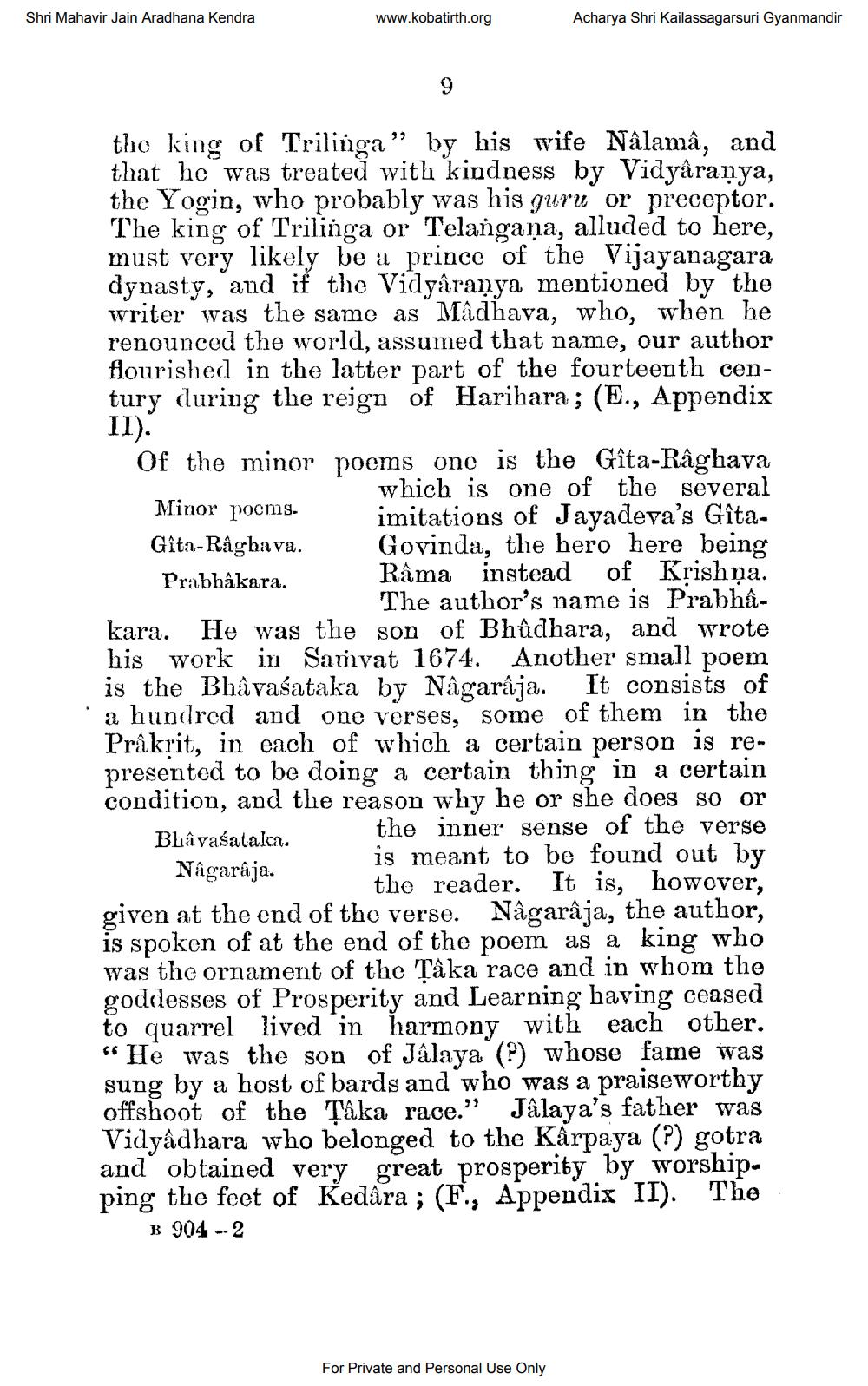________________
Shri Mahavir Jain Aradhana Kendra
www.kobatirth.org
9
Bhavasataka. Nagaraja.
the king of Trilinga" by his wife Nâlamâ, and that he was treated with kindness by Vidyâraṇya, the Yogin, who probably was his guru or preceptor. The king of Trilinga or Telangana, alluded to here, must very likely be a prince of the Vijayanagara dynasty, and if the Vidyaranya mentioned by the writer was the same as Madhava, who, when he renounced the world, assumed that name, our author flourished in the latter part of the fourteenth century during the reign of Harihara; (E., Appendix II).
Of the minor
Minor pocms. Gita-Raghava.
Prabhakara.
Acharya Shri Kailassagarsuri Gyanmandir
poems one is the Gîta-Raghava which is one of the several imitations of Jayadeva's GîtaGovinda, the hero here being Rama instead of Krishna. The author's name is Prabhâkara. He was the son of Bhûdhara, and wrote his work in Samvat 1674. Another small poem is the Bhavaśataka by Nagarâja. It consists of a hundred and one verses, some of them in the Prâkrit, in each of which a certain person is represented to be doing a certain thing in a certain condition, and the reason why he or she does so or the inner sense of the verse is meant to be found out by the reader. It is, however, given at the end of the verse. Nagaraja, the author, is spoken of at the end of the poem as a king who was the ornament of the Tâka race and in whom the goddesses of Prosperity and Learning having ceased to quarrel lived in harmony with each other. "He was the son of Jâlaya (?) whose fame was sung by a host of bards and who was a praiseworthy offshoot of the Tâka race." Jâlaya's father was Vidyadhara who belonged to the Kârpaya (?) gotra and obtained very great prosperity by worship. ping the feet of Kedara; (F., Appendix II). The
B 904--2
For Private and Personal Use Only




